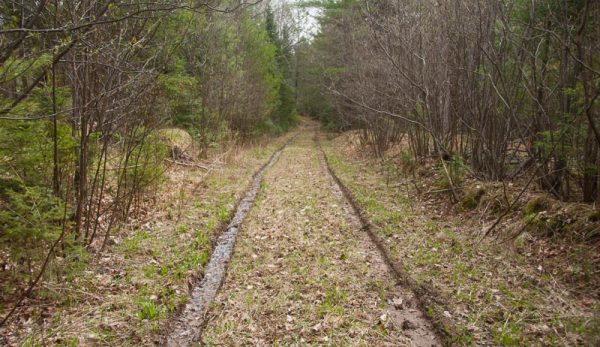
Spring is a wet time of year, particularly in regions where snowmelt unleashes a large amount of moisture at once. The ground can quickly become saturated with water. And when the ground is soft and wet, it’s easily rutted by farm machinery.
Ruts can be problematic on many levels. They disturb vegetation and increase the likelihood of erosion. This is a particular problem on sloping ground where water can flow through the ruts and wash soil away.
When ruts dry in place, they create uneven ground, becoming problematic for mowing grass or cutting hay. And of course, machines can get stuck in soft ground, creating even bigger ruts as their tires struggle to gain traction.
But some farm chores and projects can’t wait for the ground to dry. You need to perform them regardless of whether conditions are ideal.
If you want to minimize the damage caused by farm machinery in the spring (or any time when the ground is wet), these five tips can help you avoid rutting your farmland.
Avoid Wet Ground When Possible
The best solution is to avoid driving over wet ground entirely. Consider planning your routes to favor high ground and skirt around low spots.
For example, on my farm there are multiple routes I can use to access the brush pile I have tucked away in the woods on the back of the property. The shortest route involves crossing a low spot that tends to hold water in the spring and after heavy rain showers.
But when the ground is wet, I can follow a longer, more circuitous route that sticks to high ground. I’m less likely to rut this way. Sure, I lose a little time, but it isn’t much. And minimizing ruts is worth the added time.
Read more: Check out these tips for choosing a good site for your brush pile.
Lighten Your Loads
Suppose you’re hauling a wagonload of firewood out of your woodlot, or carting manure to a compost pile, or transporting a load of debris to a brush pile. If crossing a wet area is unavoidable, you can lessen the risk of significant rutting by reducing the weight of the materials you’re transporting.
When traveling across dry ground in the summer, you can probably fill your wagon and never worry about the weight. But if you’re concerned about soft ground, consider shifting to half loads, or even quarter loads.
You’ll significantly reduce the weight of your wagon and reduce the risk of creating ruts (and getting stuck).
Drive Lightweight Vehicles
Lightening loads isn’t the only option for reducing the impact of “heavy traffic.” Driving lighter vehicles is another option to consider.
Your 75HP utility tractor with its air-conditioned cab might be great most of the time. But it’s going to be a lot heavier (and a lot more damaging on soft ground) than a 20HP garden tractor or ATV.
If you can accomplish any given job with a lighter vehicle, go for it.
Read more: Which tractor is right for your farm? We take a look at 4 common types.
Choose Turf-Friendly Tires
The type of tires installed on your equipment can also make a difference. Tractors equipped with yard-friendly “R3” turf tires are less likely to cause damage than those using traction-oriented “R1” agricultural tires.
The shallow tread depths and closely spaced lugs on R3 tires are designed to distribute the weight of a tractor across a wider surface area, minimizing damage. Inflating tires to the proper PSI level can also help prevent rutting.
Consider Draining Problematic Wet Areas
If one low spot in particular stays wet for much of the year and becomes problematic with rutting and erosion, you can take steps to address the root of the issue by draining the area. Digging drainage ditches or installing underground drainage tiles can be time-consuming and expensive. You might need an expert to help plan your strategy and consider any consequences of rerouting the water.
But if you can successfully drain the lowland section of an important farm road, it might be worth the investment.
What strategies do you employ to avoid creating ruts in the spring?




